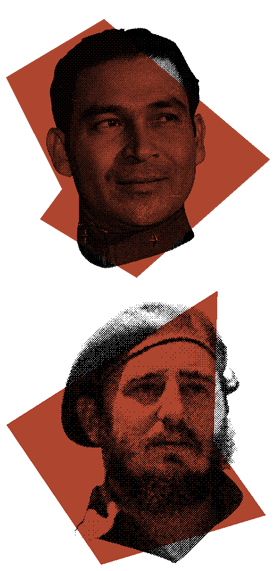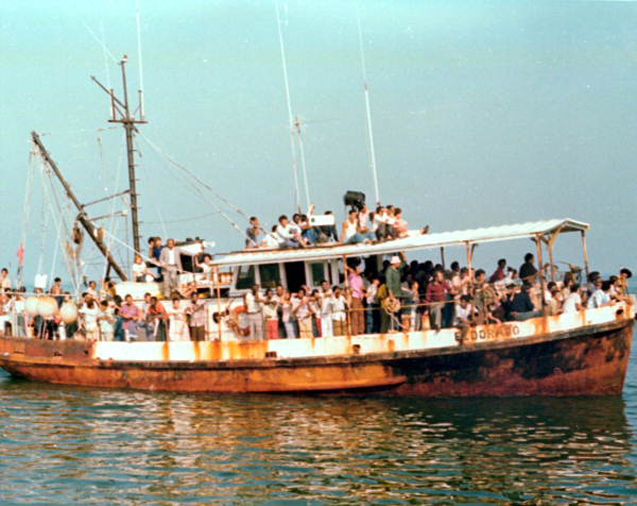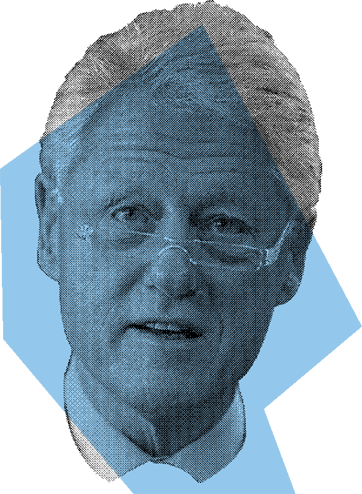

February 7, 2012 marked the 50th anniversary of the ongoing US embargo against Cuba, an island nation 90 miles off the coast of Florida. The embargo, known among Cubans as "el bloqueo" or "the blockade," consists of economic sanctions against Cuba and restrictions on Cuban travel and commerce for all people and companies under US jurisdiction.
Proponents of the embargo argue that Cuba has not met the US conditions for lifting the embargo, including transitioning to democracy and improving human rights. They say that backing
down without getting concessions from the Castro regime will make the United States appear weak, and that only the Cuban elite would benefit from open trade.
Opponents of the Cuba embargo argue that it should be lifted because the failed policy is a Cold War relic and has clearly not achieved its goals. They say the sanctions harm the US economy and Cuban citizens, and prevent opportunities to promote change and democracy in Cuba. They say the embargo hurts international opinion of the United States.

History of US-Cuba Relations, 1800s to 1980s
The United States and Cuba have not always been at odds. In the late 1800s, the United States was purchasing 87% of Cuba’s exports and had control over its sugar industry. In the 1950s, Havana’s resorts and casinos were popular destinations for American tourists and celebrities such as Frank Sinatra and Ernest Hemingway. By Jan. 1, 1959, however, revolutionary Fidel Castro had overthrown the US-backed President Batista and established Cuba as the first Communist state in the Western Hemisphere.
From 1959 to 1960, Castro seized $1.8 billion of US assets in Cuba, making it the largest uncompensated taking of American property by a foreign government in US history. Depending on how interest is calculated, claims on the seized assets range from $6.4 to $20.1 billion in 2012 dollars.
The US government was also concerned about the threat posed by having a new Soviet ally so close to America’s shores. On Oct. 19, 1960, President Eisenhower signed a partial embargo on exports
to Cuba, the first step towards the US policy that exists today. Eisenhower ended diplomatic relations with Cuba and closed the US embassy in Havana on Jan. 3, 1961, saying “There is a limit to what the United States in self-respect can endure. That limit has now been reached.” The former embassy building would later serve as the site of the US Interests Section (a de facto embassy) opened by President Carter in 1977.
President Kennedy approved a 1961 plan to train and arm Cuban exiles trying to overthrow Castro’s communist regime, but the Apr. 17, 1961 Bay of Pigs invasion failed when the Cuban military defeated the outnumbered US-backed forces. The situation became more dire when a US spy plane observed the Soviet Union shipping nuclear missiles to Cuba. On Feb. 3, 1962, President Kennedy signed Proclamation 3447 (effective date Feb. 7, 1962) to declare “an embargo upon all trade between the United States and Cuba.”

The Cuban Missile Crisis, period of negotiations from Oct. 15-28, 1962, eventually ended in an agreement for the USSR to remove its weapons from Cuba. President Kennedy later estimated
the 50/50 odds of the United States launching
a nuclear attack on the island nation as “between one in three and even,” demonstrating how close the countries came to going to war. On Feb. 8, 1963, the United States prohibited travel to Cuba and in July of that year the Cuban Assets Control Regulations (CACR) were issued as a comprehensive economic sanction outlawing financial transactions with Cuba. The regulations also prohibit the purchase or importation of any merchandise of Cuban origin, with the exception of “information or information materials”
(such as publications, recorded music, and
certain artwork).
In 1977, US President Jimmy Carter showed signs of attempting to thaw relations by opening the US Interests Section in Havana and authorizing secret talks wtih Cuba. Proponents of the embargo note that instead of reciprocating with goodwill, Castro authorized the 1980 Mariel Boatlift, in which 125,000 Cubans, including nearly 2,500 prisoners and mentally ill patients, were sent to Florida, reportedly to ease the Cuban food shortages, get rid of people who criticized his regime, and embarrass the United States which took in the refugees.
Supporters of the embargo received further ammunition when the US State Department added Cuba to the list of State Sponsors of Terrorism in 1982, reportedly because of its support for communist rebels in Africa and Latin America. Syria, Iran, and Sudan are the other three countries on the list. Critics of the terrorist labeling, including US Army retired Brigadier General John Adams, said that the designation has no justification and undermines US credibility in the international community.
Congressional and Presidential Changes to US Policy, 1990s
to 2000s
The 1992 Cuban Democracy Act and the Cuban Liberty and Democratic Solidarity Act of 1996 (aka Helms-Burton Act) strengthened the economic embargo. The bills prohibited US foreign subsidiaries (a company controlled by a company based in another country) from trading with Cuba, restricted remittances (money sent as a gift) to prevent the Cuban government from accessing US currency, and allowed sanctions against companies that invested in property seized from Americans during the communist revolution. Both laws were condemned by US allies such as Canada, United Kingdom, Mexico, and France.
Despite the embargo, Cuba managed to keep its economy afloat with $3 billion in annual aid from the USSR. When the Soviet Union collapsed in 1991, so did its financial assistance to Cuba,

which caused the economy in the island nation to decline by 35-50% between 1989 and 1993. The Cuban government was able to stop the descent and promote economic growth by allowing limited tourism and foreign investment in 1994.
In 1995, President Clinton signed an executive order that lifted some travel restrictions and allowed a Western Union office to open in Havana, which infuriated Cuban-American leaders such as US Rep. Bob Menendez (D-NJ). Clinton said that Menendez called him “every two or three days to be harder on Castro.” That pressure prevented him from taking a stronger stance against the embargo, despite his ardent belief that the sanctions should be lifted. Historian Taylor Branch recalled a conversation with President Clinton:
“He confided on tape that the embargo was a foolish, pandering failure. It had allowed Castro to demonize the United States for decades... The president said anybody ‘with half a brain’ could see the embargo was counterproductive.”
The Clinton administration also dealt with the issue of immigration to the United States by brokering the May 1995 “Cuban Migration Agreement,” which led to a policy known as “wet foot/dry foot.” Cubans interdicted at sea (“wet foot”) will be returned to Cuba unless they cite fear of persecution, while those who are able to reach the shore (“dry foot”) would be permitted to remain in the United States.
Following the devastating Hurricane Michelle in 2001, the United States and Cuba formed a reluctant agreement allowing US companies to sell food to Cuba for humanitarian reasons. The US government required Castro to pay upfront in cash and despite Castro’s disinclination to allow American imports, the United States soon became Cuba’s number one food supplier and sales peaked at $710 million in 2008.
The George W. Bush administration added new, harsher restrictions to the embargo and increased penalties for violating them to up to 10 years in prison and $1 million in fines. Even the usually pro-embargo Cuban American community wanted to return to pre-2004 rules that allowed them more freedom to visit their families in Cuba or send money to help those relatives.
In 2008, prolonged illness forced Fidel Castro to step down officially as president of Cuba and allow his brother to take his place. Raúl Castro initially showed signs of wanting to implement economic reforms that would be the first step towards normalizing relations with the United States, but a series of hurricanes in 2008 damaged Cuba’s leading industries and took attention away from political reforms.
Cuban Policy Under the Obama Administration
As a senator in 2004, President Obama stated his opposition to the US policy on Cuba, saying “The Cuban embargo has failed to provide the sorts of rising standards of living, and has squeezed the innocents in Cuba and utterly failed to overthrow Castro, who has now been there since I was born. It is now time to acknowledge that that particular policy has failed.”
In 2011, although President Obama made strides in easing the Cuban embargo, most significantly by lifting restrictions on travel and sending remittances in 2011, he actually defended
maintaining the blockade. “[W]e have to see a signal back from the Cuban government that it is following through on releasing political prisoners, on providing people their basic human rights, in order for us to be fully engaged with them,” he stated. “And so far, at least, what we haven’t seen is the kind of genuine spirit of transformation inside of Cuba that would justify us eliminating the embargo...”
Former Secretary of State Hillary Clinton alleged that the Castro regime has sabotaged US attempts to improve relations between the two countries. She said,
“It is my personal belief that the Castros do not want to see an end to the embargo and do not want to see normalization with the United States, because they would lose all of their excuses for what hasn’t happened in Cuba in the last 50 years.”
In 2013, the United Nations passed a resolution condemning the embargo for the 22nd consecutive year. The vote was 188-2, with only Israel supporting the US policy. In 2012 Cuban Foreign Minister Bruno Rodriguez spoke to the UN General Assembly about “the inhumane, failed and anachronistic policy of 11 successive US administrations.” US Ambassador to the UN Ronald Godard defended the sanctions as a tool to “encourage respect for… human rights and basic freedoms.” Godard argued that the United States was helping the people of Cuba by sending $2 billion in family remittances and $352 million in agricultural, medical, and humanitarian products in 2011. He also noted that the Cuban government
committed more than 4,000 “short-term, politically motivated detentions” in 2011, a number surpassed in 2012.
Fidel Castro, in his late 80s, is reportedly very ill and his younger brother Raúl Castro is also over 80 years old. Raúl was re-elected in Feb. 2013, at which time he announced that he would step down in 2018. Some people hope that a new regime will make the reforms necessary to repeal the blockade, while others look for President Obama to end the embargo regardless of Cuba’s actions. After 50 years of strengthening and easing the sanctions, the US embargo against Cuba remains in place and the debate over whether to maintain or lift the embargo continues.

People-to-people travel is not cheap or easy.
A four-night “Weekend in Havana” trip from Insight Cuba, without airfare, sells for about $2,000 per person.
The high cost of the trips is due to the fact that operators need to send guides with their groups to make sure they comply with the travel regulations. The mandatory annual renewal of U.S. licenses can take months of navigating a complicated bureaucracy.
This summer, many tour operators wondered if people-to-people travel was ending altogether, after the Treasury Department started denying licenses to operators or simply not responding to renewal requests.
Several tour operators contacted by CNN said that the process may have gotten bogged down by the fact that the renewal application is now close to 200 pages and requires that the operators explain how each stop on the itinerary fosters greater friendship between Americans and Cubans.
Criminal penalties for violating the U.S. Treasury Department’s Office of Foreign Assets Control regulations range up to 10 years in prison and $250,000 in individual fines.
